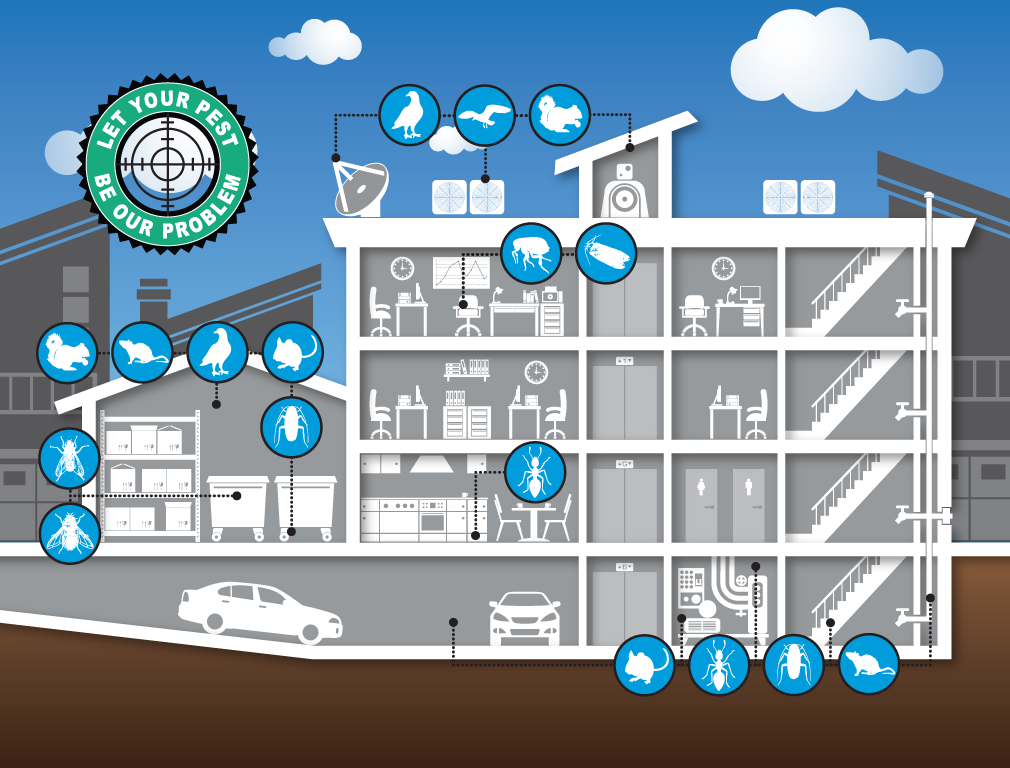Tips For Homeowners: Just How To Keep Rodents Out Of Your Attic
Tips For Homeowners: Just How To Keep Rodents Out Of Your Attic
Blog Article
Personnel Author-Silver Garza
Envision your attic as a relaxing Airbnb for rodents, with insulation as fluffy as resort cushions and electrical wiring extra luring than room service. Currently, imagine these undesirable visitors throwing a wild event in your house while you're away. As a home owner, ensuring your attic is rodent-proof is not practically comfort; it has to do with protecting your property and loved ones. So, what straightforward actions can you take to protect your haven from these fuzzy trespassers?
Evaluate for Entry Points
To start rodent-proofing your attic room, evaluate for entry factors. Beginning by thoroughly checking out the outside of your home, looking for any openings that rodents might make use of to gain access to your attic room. Look for voids around energy lines, vents, and pipes, as well as any kind of fractures or openings in the structure or siding. Ensure to pay attention to areas where different structure materials satisfy, as these prevail entry factors for rats.
Furthermore, check the roofing for any kind of damaged or missing out on tiles, in addition to any voids around the sides where rats could squeeze with. Inside the attic, try to find signs of existing rodent task such as droppings, chewed cables, or nesting materials. Use a flashlight to extensively check dark edges and concealed areas.
Seal Cracks and Gaps
Check your attic extensively for any kind of fractures and gaps that require to be sealed to avoid rats from getting in. Rats can press via also the tiniest openings, so it's crucial to secure any type of possible entrance points. Inspect around pipelines, vents, cable televisions, and where the walls fulfill the roofing system. Utilize best flea and tick of steel wool and caulking to seal off these openings successfully. Steel woollen is a superb deterrent as rats can not chew through it. Guarantee that all gaps are tightly sealed to deny accessibility to unwanted pests.
Do not overlook the value of securing voids around windows and doors too. Usage climate removing or door moves to seal these areas successfully. rodent exterminator cost where energy lines go into the attic and secure them off using an appropriate sealant. By taking the time to seal all splits and voids in your attic room, you develop a barrier that rats will find tough to breach. Prevention is key in rodent-proofing your attic room, so be complete in your initiatives to seal any prospective entry points.
Remove Food Resources
Take aggressive actions to remove or keep all possible food sources in your attic to prevent rodents from infesting the space. Rats are attracted to food, so eliminating their food sources is critical in keeping them out of your attic room.
flea control for home what you can do:
1. ** Store food securely **: Stay clear of leaving any food items in the attic room. Shop all food in airtight containers made of steel or sturdy plastic to prevent rodents from accessing them.
2. ** Tidy up particles **: Eliminate any type of piles of debris, such as old newspapers, cardboard boxes, or timber scraps, that rats can use as nesting product or food sources. Keep the attic clutter-free to make it less enticing to rats.
3. ** Dispose of waste effectively **: If you utilize your attic room for storage and have garbage or waste up there, make sure to deal with it consistently and appropriately. Rotting garbage can bring in rodents, so keep the attic tidy and devoid of any natural waste.
Conclusion
To conclude, keep in mind that an ounce of prevention deserves an extra pound of remedy when it comes to rodent-proofing your attic.
By putting in the time to evaluate for access factors, seal fractures and voids, and get rid of food resources, you can keep unwanted insects at bay.
Bear in mind, 'An ounce of prevention deserves a pound of cure' - Benjamin Franklin.
Remain positive and safeguard your home from rodent invasions.
